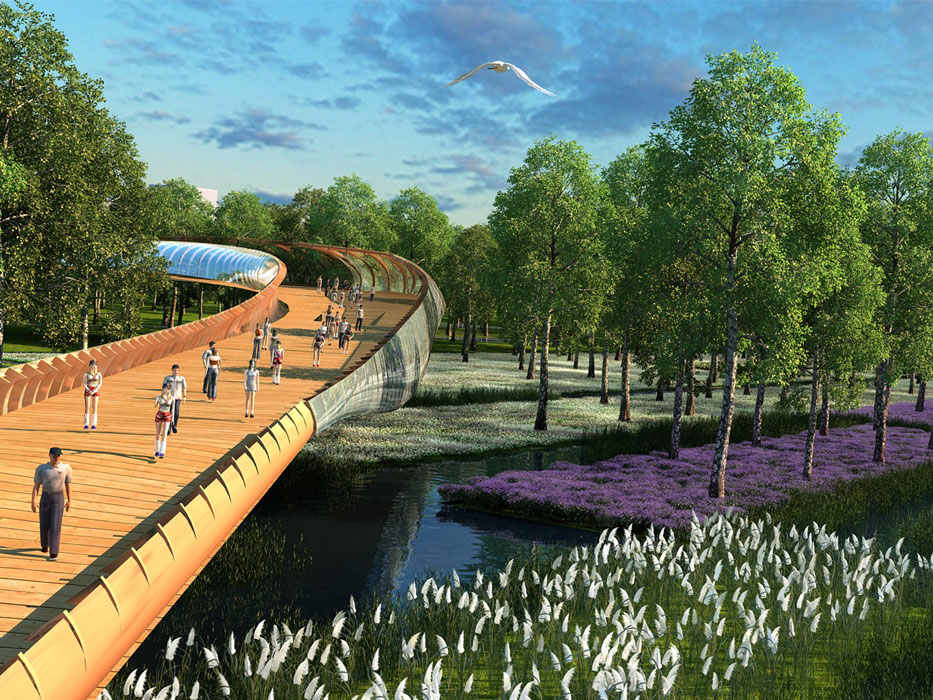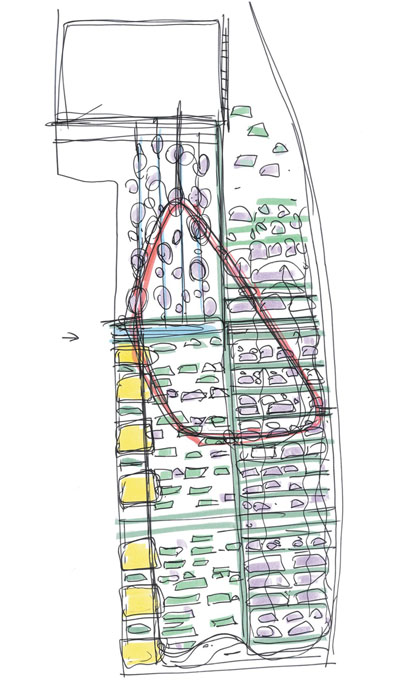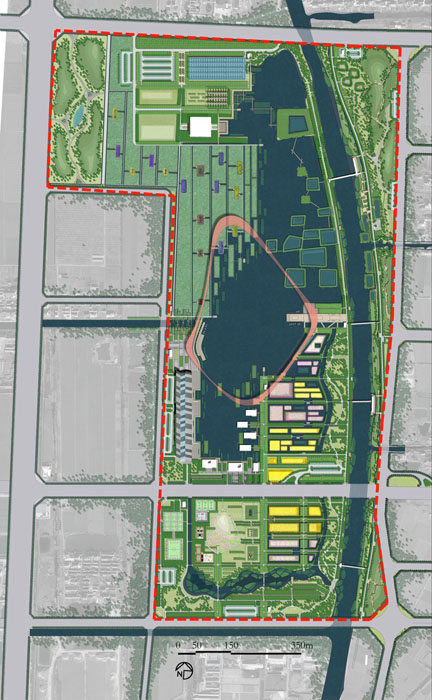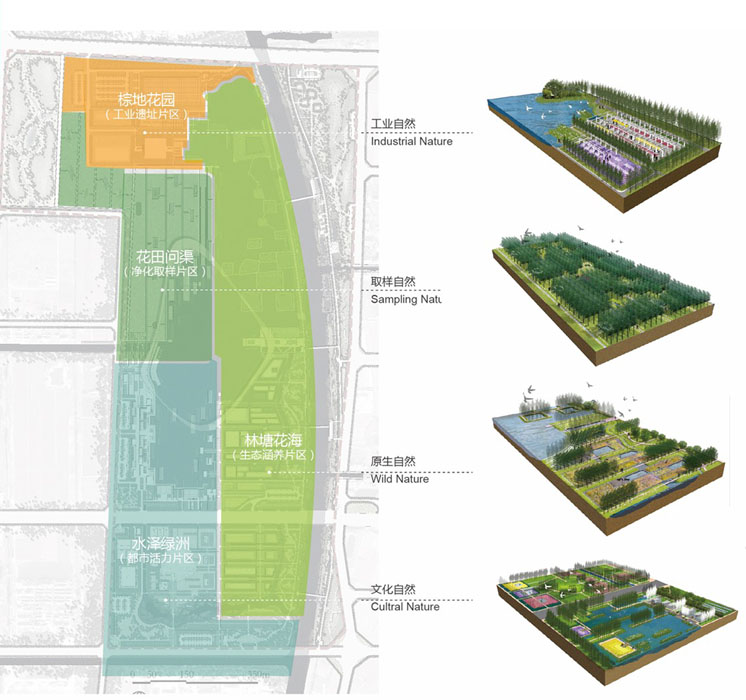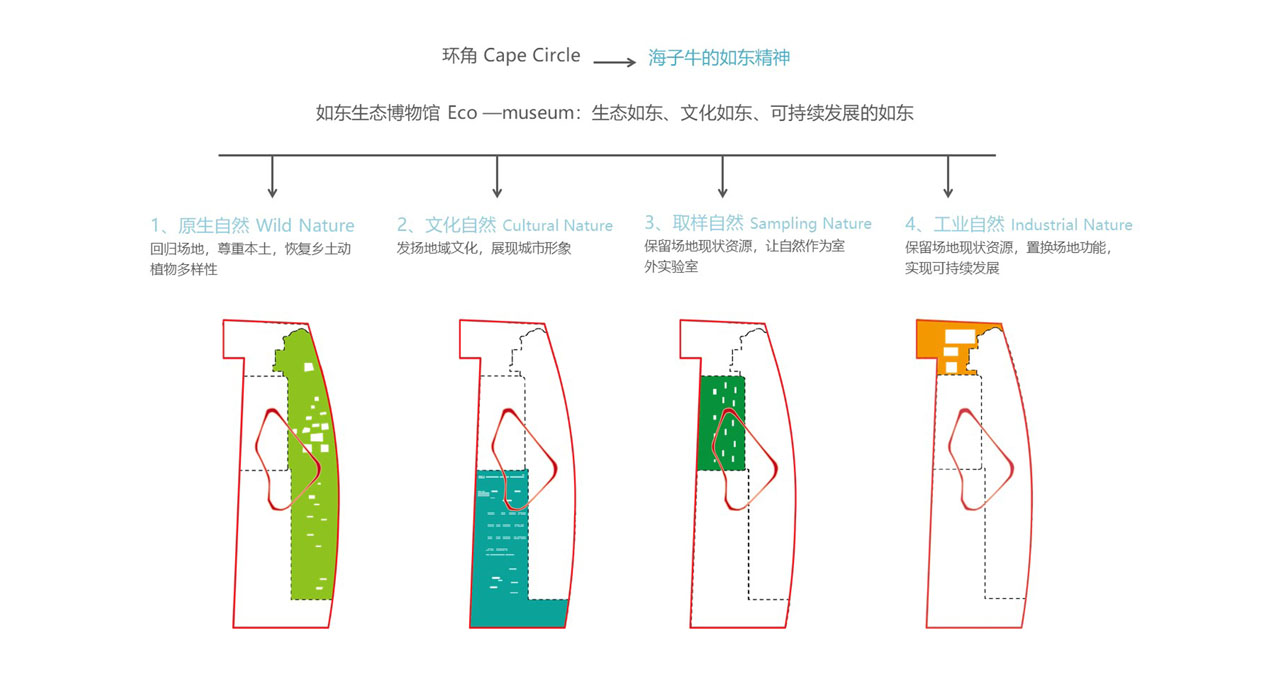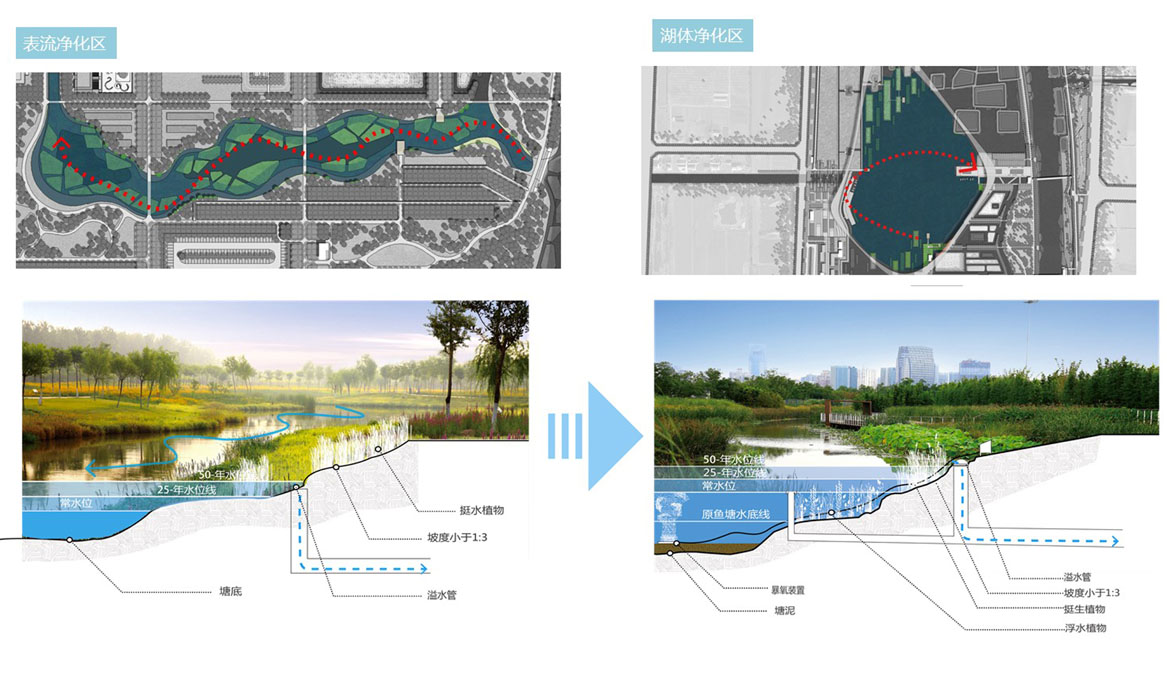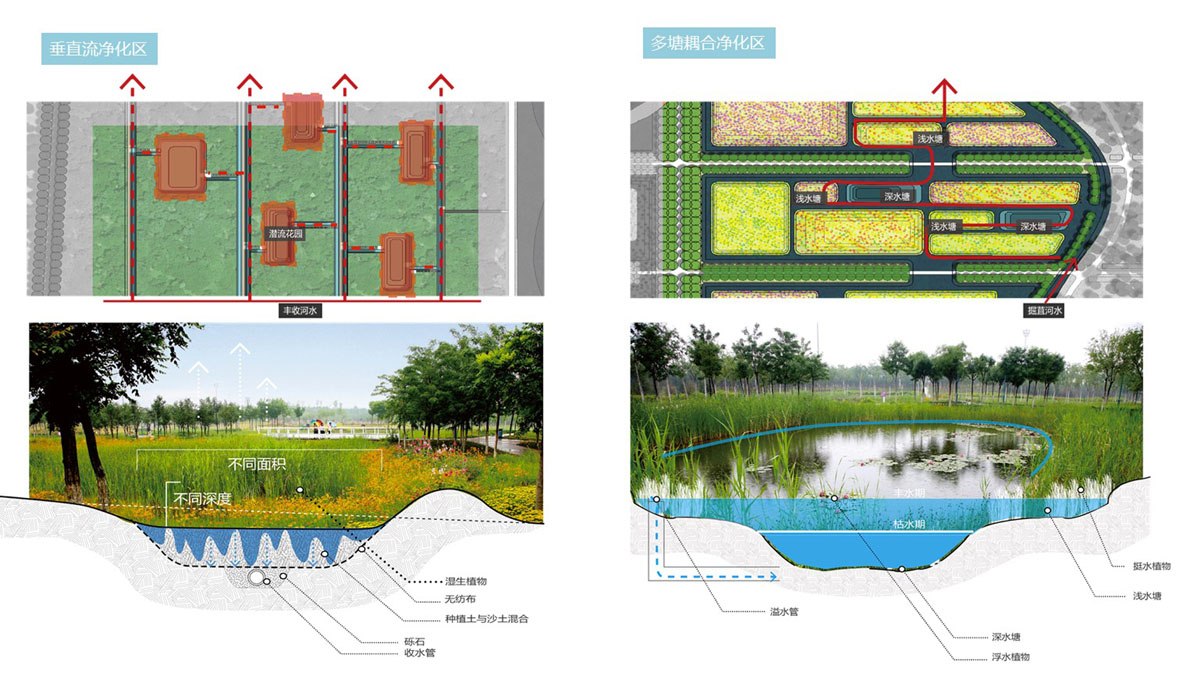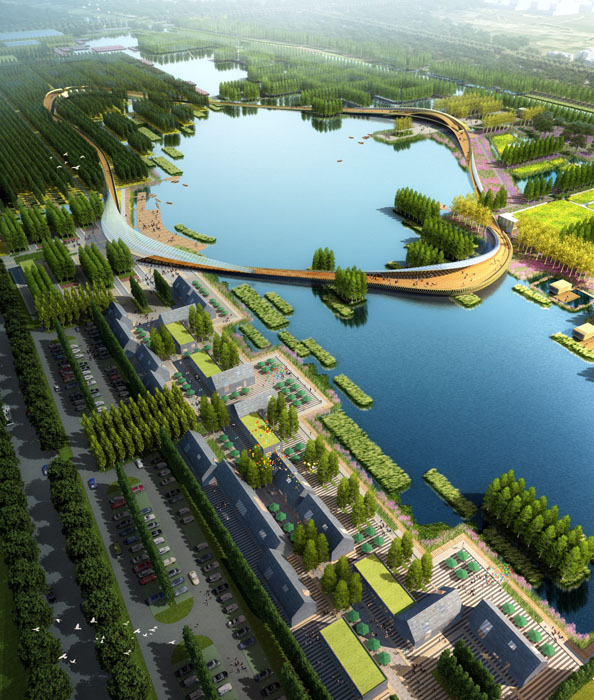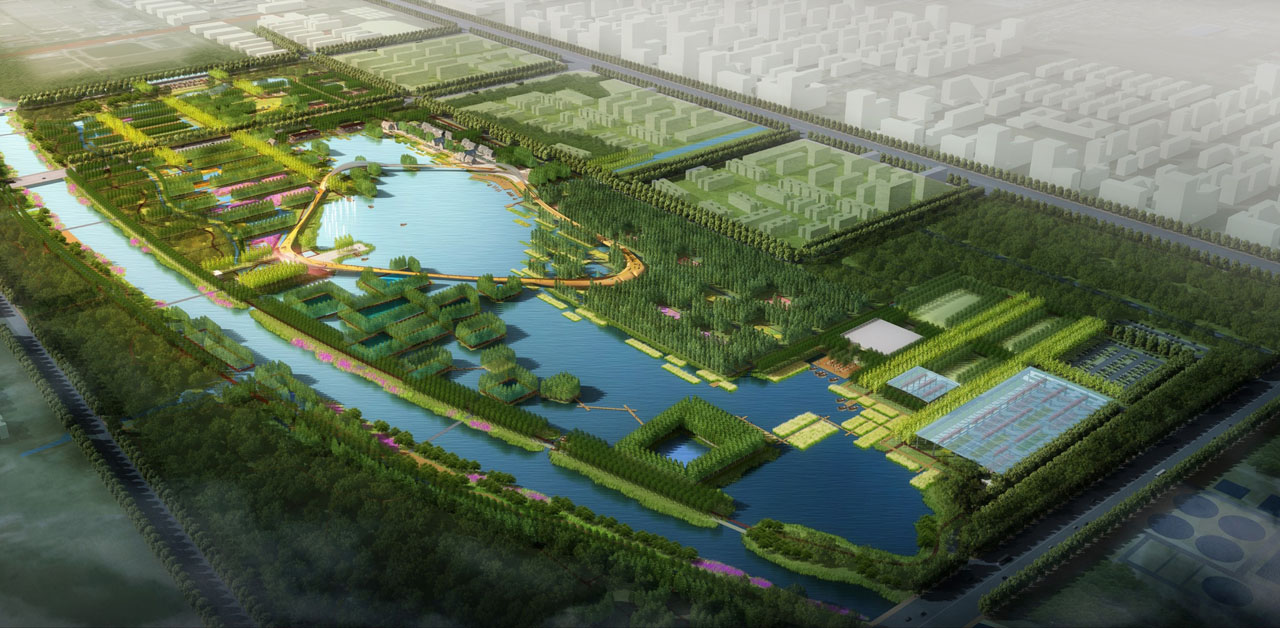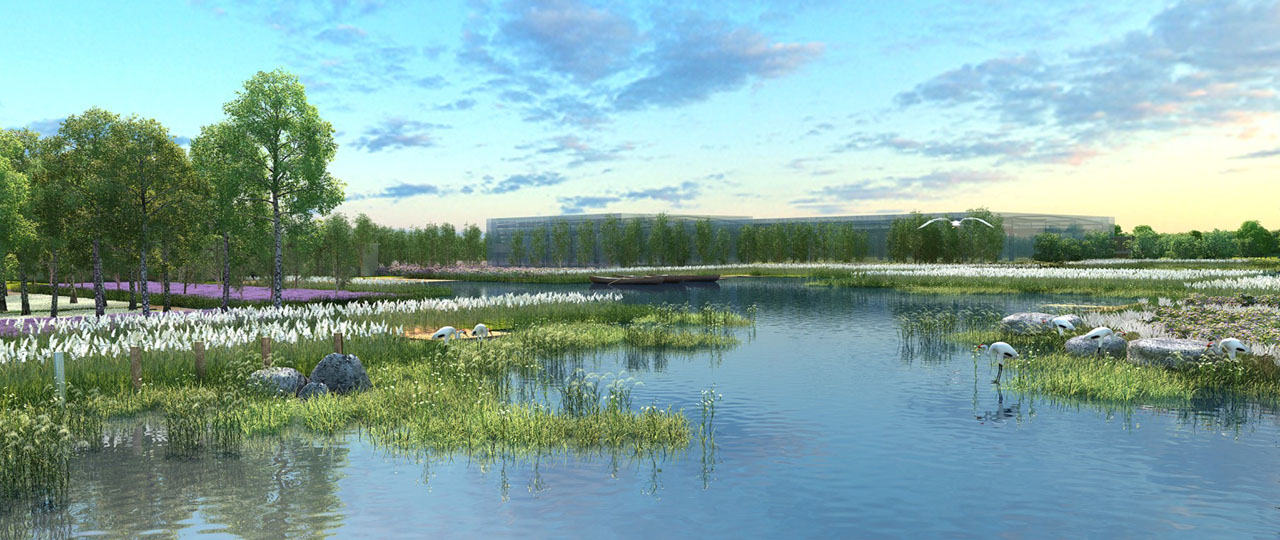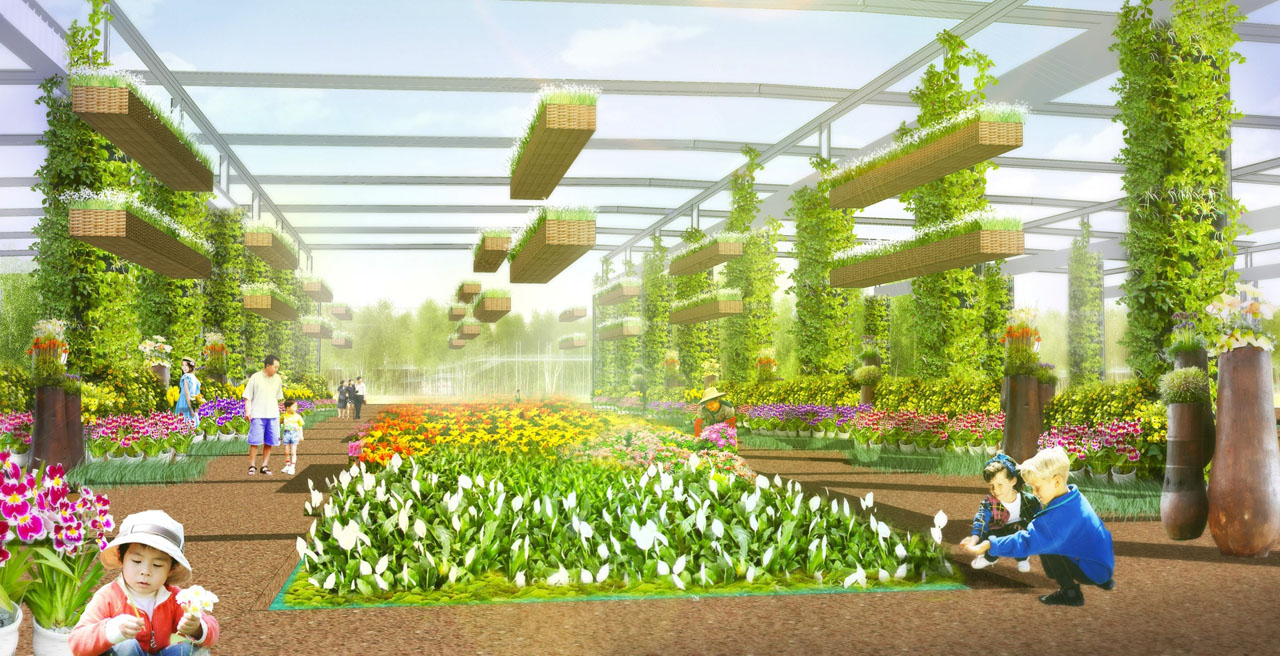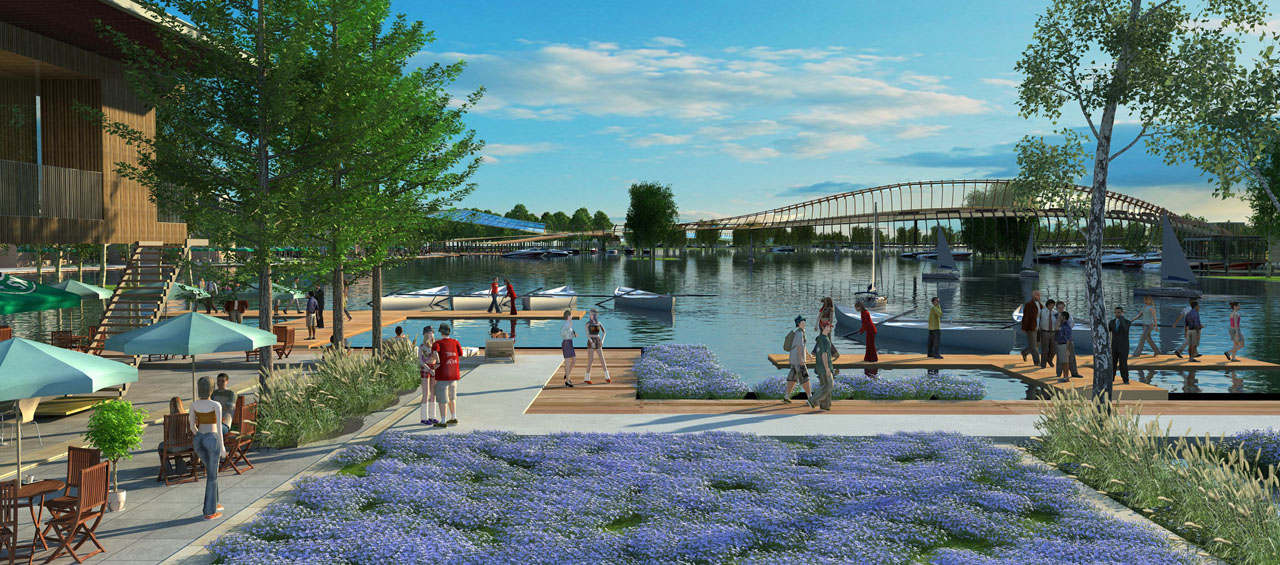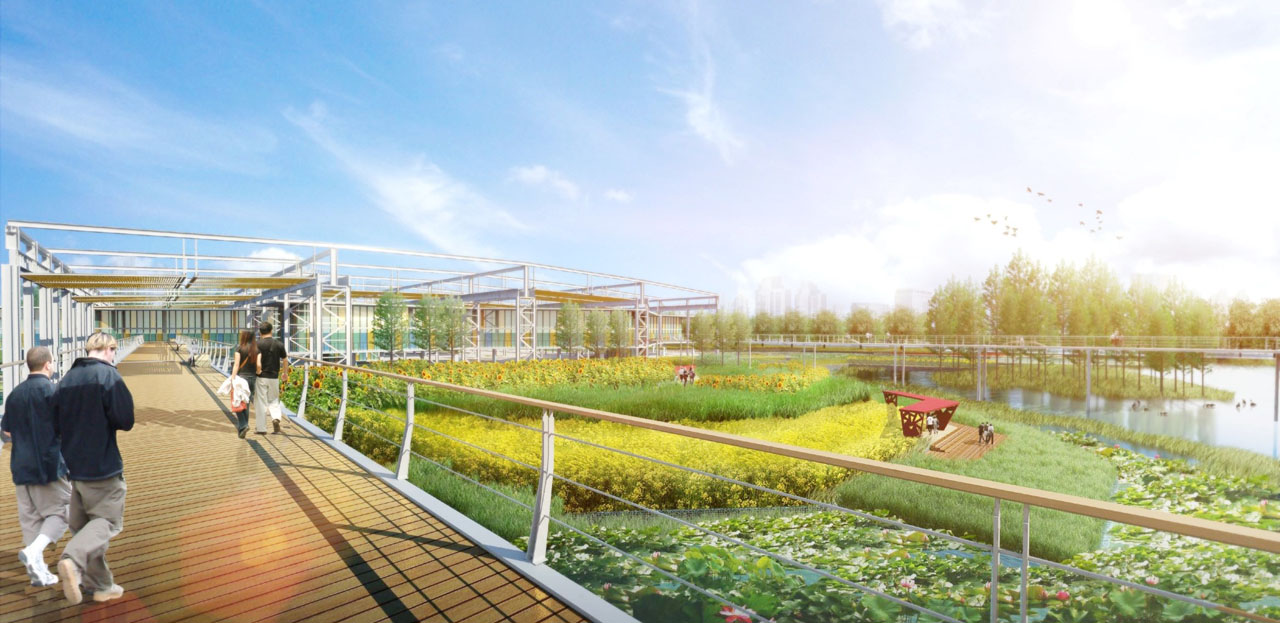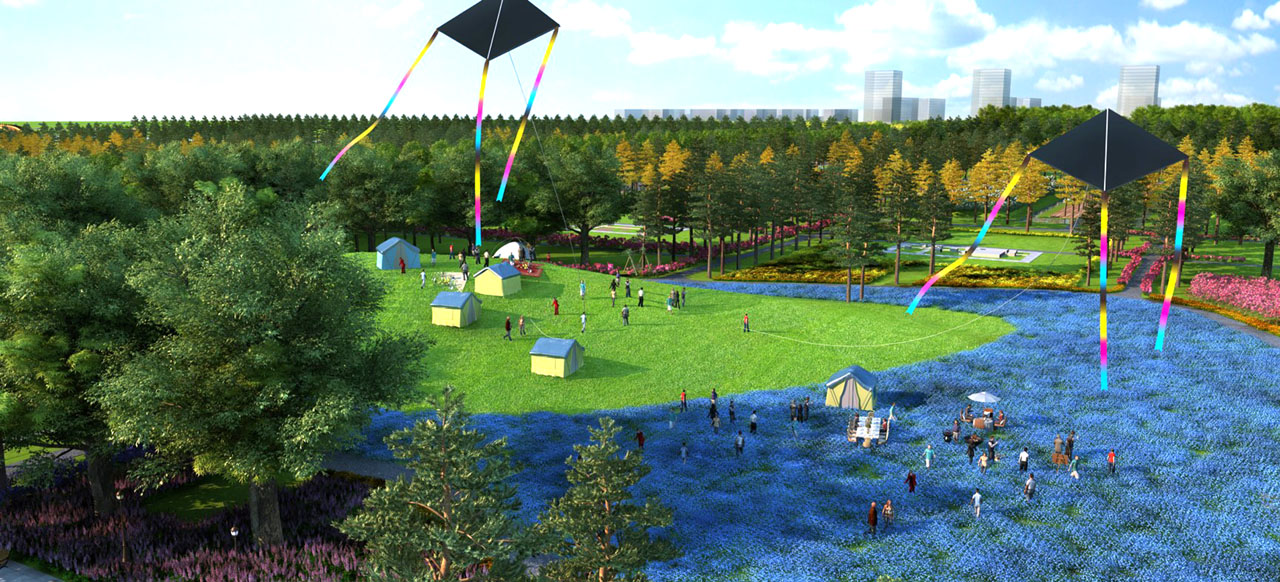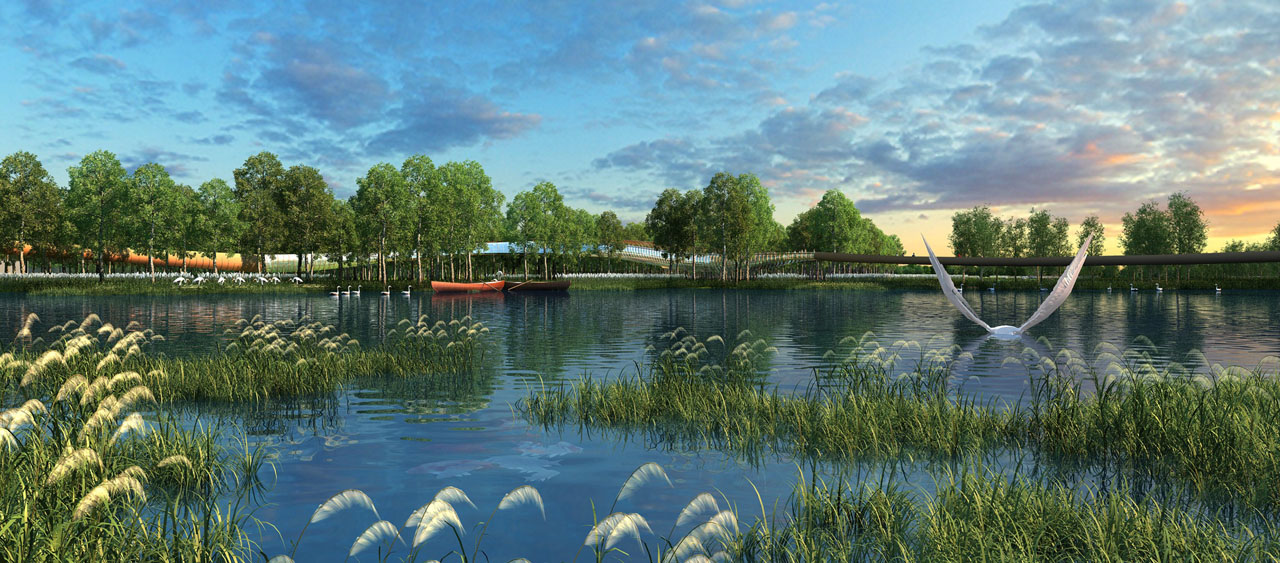Nantong Rudong Jueju River Wetland Country Park
Project Information
- Project Location:
- China Nantong, Jiangsu
- Project Scale:
- 1.2 Square Kilometers
- Design Time:
- October 2013
Project Profile
1. Project Statement
Rudong Wetland Country Park is located north of Danjiang Road, near Taishan Road on the west side, adjacent to Wuyi Mountain Road, with the Jueju River on the east side, and near Huanghe Road on the south side. The total design area is approximately 1.2 square kilometers. The eastern part of the design area features the Jueju River, which is a major flood control and drainage channel for the city. The site mainly consists of existing fish ponds with a dense water network and abundant water resources, making it an important bird habitat. However, due to human interference, the water quality and habitats are under significant threat. This design respects the site, focusing on improving water quality and restoring the diversity of native flora and fauna, transforming it into an "ecological museum" showcasing bird habitats and wetland purification, and serving as an ecological display window for Rudong City.
2. Design Strategy
① Sustainable Development Strategy
The site retains the steel factory's building spaces, existing poplar forests, and reed marshes as much as possible. The fish ponds, an important memory of the site, are partially preserved and transformed to create a more diverse spatial hierarchy.
② Ecological Strategy
The design aims to transform the wetland into an urban sponge that alleviates regional stormwater issues by constructing a multi-layered network and ecological circulation system. Through rainwater collection facilities and reasonable planning of rainwater runoff directions, the design establishes appropriate connections between the urban interface and the wetland water system. It combines urban stormwater management facilities with wetland landscape design, strengthening the role of wetland water landscapes as ecological infrastructure supporting the surrounding environment.
A multi-level rainwater collection system is designed, with the first-level rainwater collection corridors and points mainly located around the park. Through rainwater collection ditches on both sides of the roads and small rain gardens combined with municipal stormwater networks, road rainwater is collected and discharged, eventually directed into the park's green spaces and wetlands. Second-level rainwater collection corridors and points within the park channel rainwater from green spaces, permeable pavements, plazas, parking lots, and building roofs into nearby small rain gardens or sunken green areas. The water purification system utilizes various wetland purification methods within the park to ensure the safety of water quality supplying the park's landscape water system.
The design also includes soil remediation and improvement for the former steel plant, enriching the diversity of native plant species to create a landscape featuring Rudong's native plants.
③ Cultural Strategy
The design fully explores Rudong's local natural and cultural characteristics and folk culture, applying them to site design and the design of structures and installations to create uniquely functional areas.
3. Landscape Feature
The park is divided into four major functional zones:
Brownfield Garden (Industrial Nature Zone): This area is the former Rudong Steel Plant. In the planning and design, the framework of the plant is retained and utilized, repurposing its functions into a cut flower market and a special rest garden.
Floral Fields Inquiry (Sampling Nature Zone): The design uses the existing poplar forest as a plant purification sampling test site. By planting aquatic plants, the area allows nature to work, purifying the water while educating people about the different purification abilities of plants, creating a natural laboratory.
Forest Pond Flower Sea (Native Nature Zone): This area retains and utilizes the site’s fish pond texture to the greatest extent, adopting a low-investment, low-maintenance approach that allows natural succession and the flourishing of flora and fauna, presenting a scene of native natural beauty.
Water Oasis (Cultural Nature Zone): This zone integrates natural ecology with Rudong's cultural heritage, offering visitors interactive experiences that showcase local culture through various functional activities.
4. Conclusion
The future Jueju River Wetland Country Park will be a collaborative effort by the government and various sectors of society to protect and develop Rudong's natural and cultural resources. It will realize Rudong's unique water and green ecology while perfectly combining green spaces with urban leisure, recreation, and tourism functions.
